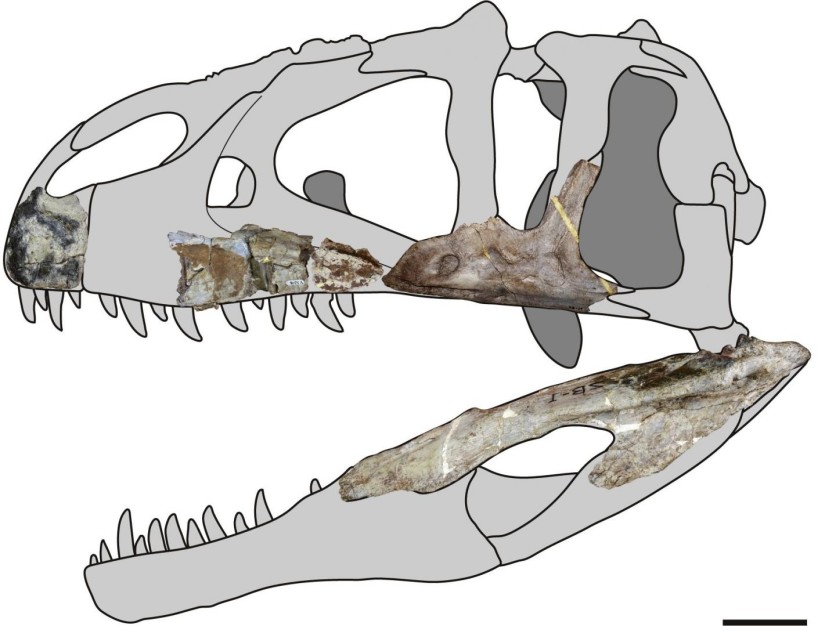
Paleontologists have reported the discovery of the fossils of a large carnivorous dinosaur in Thailand. The prehistoric creature was a top predator when it walked on Earth about 115 million years ago.
Siamraptor Suwati
The dinosaur named Siamraptor suwati belonged to an early group of flesh-eating dinosaurs known for their shark-like teeth, the Carcharodontosaurs.
The best-known member of this group is the carcharodontosaurus, or the "shark-toothed lizard", one of the largest carnivores that lived about 90 million years ago in northern Africa. These dinosaurs reached about 45 feet in length.
The suwati spanned more than 26 feet long and weighed at least 3.5 tons when it lived during the Early Cretaceous Period preying on plant-eating dinosaurs. It is to date the largest carnivorous dinosaur ever found in Thailand.
Duangsuda Chokchaloemwong, from Thailand's Nakhon Ratchasima Rajabhat University, and colleagues analyzed the bones of the dinosaur and found that the skeleton is shot through with air sacs, which likely made the creature's frame lightweight and may have helped the dinosaur breathe faster.
Sheds Light On Evolutionary History Of The Carcharodontosaurs
The researchers said that the discovery of the Siamraptor, whose name means "robber from Thailand, "sheds light on the early evolutionary history of the carcharodontosaurs.
"Siamraptor is the best preserved carcharodontosaurian theropod in Southeast Asia, and it sheds new light on the early evolutionary history of Carcharodontosauria," the researchers wrote in their study, which was published in journal PLOS One on Oct. 9.
Paleontologists have found carcharodontosaurs from the Early Cretaceous in North America, Europe, and Africa. Until fossils of the Siamraptor were unearthed in Thailand, however, there were no fossils of the prehistoric predator from the same time in Southeast Asia.
This suggests that the carcharodontosaurs spread to several ancient continents during the Early Cretaceous.
"The comparison of Early Cretaceous dinosaurs from Japan and Thailand enables us to understand deeply about them, such as the history of geographical radiation of dinosaurs," said study author Soki Hattori, from the Fukui Prefectural Dinosaur Museum in Japan.
ⓒ 2025 TECHTIMES.com All rights reserved. Do not reproduce without permission.


![Best Gaming Mouse For Gamers With Smaller Hands [2025]](https://d.techtimes.com/en/full/461466/best-gaming-mouse-gamers-smaller-hands-2025.png?w=184&h=103&f=6fd057ef777bd39251d4e7e82e9b23f1)

